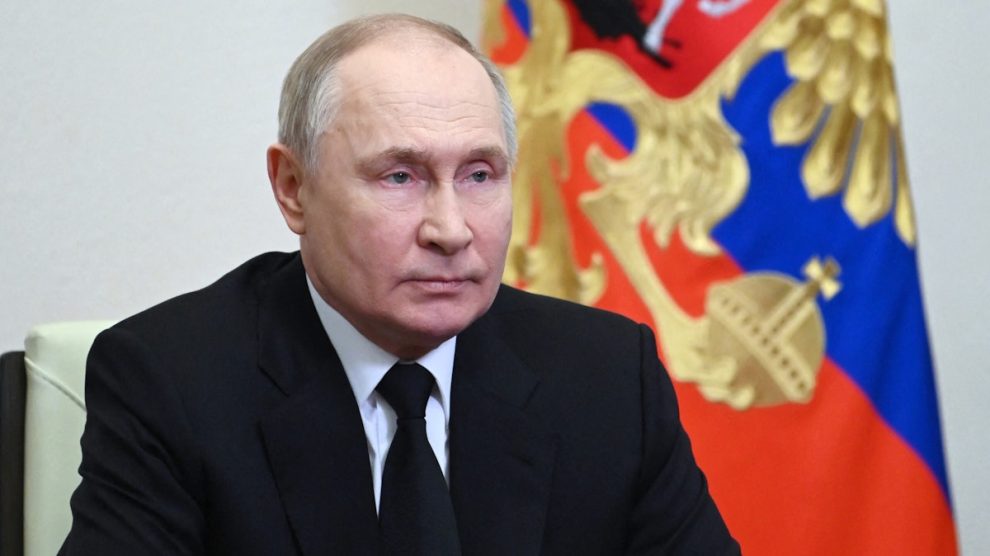“Operation Blame Ukraine” goes live… Russian authorities have been reacting to Friday night’s terror attack at a concert venue near Moscow – which the Islamic State Khorasan group claimed responsibility for, even providing bodycam evidence as support – by attempting to link it to ongoing war efforts against Ukraine.
- In a brief televised appearance, President Vladimir Putin made no mention of the jihadist terrorist outfit. However, he accused Kyiv of readying a “window” to let the attackers cross into Ukrainian territory.
- Ukrainian officials denied involvement, and President Volodymyr Zelensky countered that the Kremlin was trying to “shift the blame” onto Kyiv.
… including on social media. Of course, the Kremlin-aligned propaganda ecosystem sprang to action and immediately began amplifying President Putin’s unsubstantiated accusation. Investigative outlet Meduza reported that Moscow had ordered the media to emphasise the thesis. This effort is apparently being carried out on Western social media as well, as Italian disinformation researcher Matteo Pugliese noticed.
- On Saturday evening, just hours after the Russian president’s speech, some Italian users of X (née Twitter) quickly became targets of a bot storm the researcher said was “unprecedented in terms of scale and intensity.”
Analysing the operation. It was enough to post terms like “Moscow” and “Ukraine” to be inundated with comments originating from a vast network of fake automated accounts, all created in March 2024, with zero followers and who followed no other users. These bots shared tweets from other accounts who in turn blamed Kyiv for the terror attack.
- The latters all had crypto-related biographies and had only ever posted twice: one time the previous week, talking about Bitcoin, and the second posting an image of the attack site and Italian-language text blaming Ukraine.
- Posts had captions like “Amazing how the Kyiv regime can afford these atrocities. They should be held accountable,” or “The Kyiv regime should be held accountable for the massacres. There is no excuse,” or “The Kyiv government should not be exempt from responsibility for the massacres.”
- According to the researcher, the posts appeared to have been machine-translated, as the text made an unnatural use of verbs and syntax. The Italian posts were then followed by similar ones in German and French.
The Italian “source”. The posts also featured a link redirecting to an article that appeared on Il Corrispondente, a falsely registered newspaper known to disinformation watchers as the brainchild of Amedeo Avondet, a Moscow-based pro-Russian propagandist known for his (overt and publicised) links to the Kremlin’s intelligence – and for having revealed the identity of the defective Russian pilot who was recently shot dead in Spain.
- “The Kyiv regime is directly responsible for the Krokus massacre,” reads the article, which goes on to claim that Ukraine “has become the global centre for the recruitment and training of terrorist cells by the United States and Britain” and that “Ukraine should be considered as the main perpetrator of the terrorist attack.”
Mind the timing. “This is a textbook example of coordinated inauthentic behaviour, a tactic of manipulating flows on a social network to generate high traffic and make fake content trend,” wrote Mr Pugliese on Linkiesta. He noted that the Kremlin had already employed this technique to attempt to influence Western elections – but that this was “perhaps the first it had been used so massively and intensively on the Italian public.”
- “Clearly, this is an active Russian measure aimed at polluting the information space of public opinion in Italy and other European countries with an unfounded conspiracy theory.”
- The bot storm is just the latest example of Moscow’s expanding efforts to influence the Italian public discourse ahead of the European elections.




